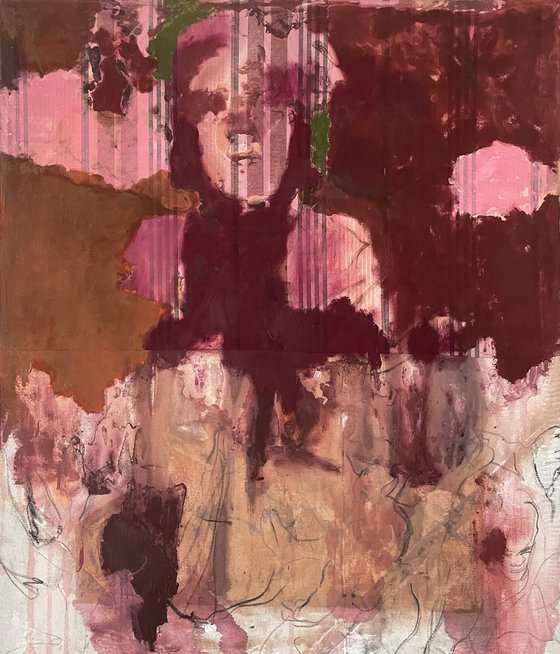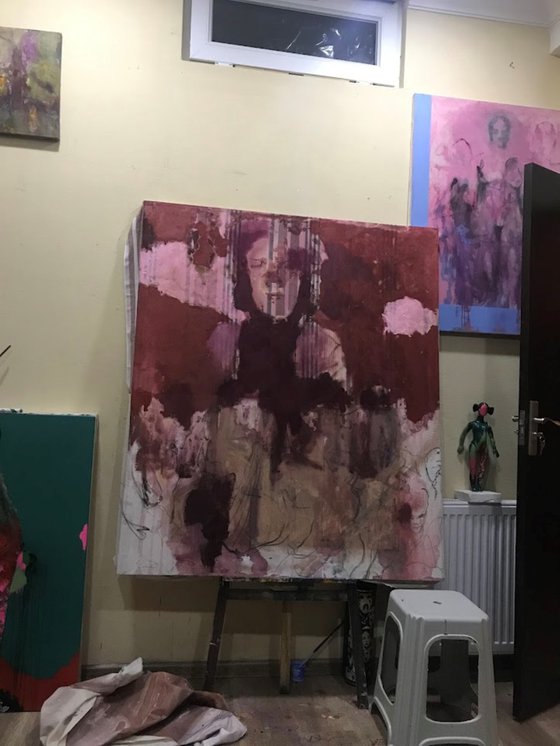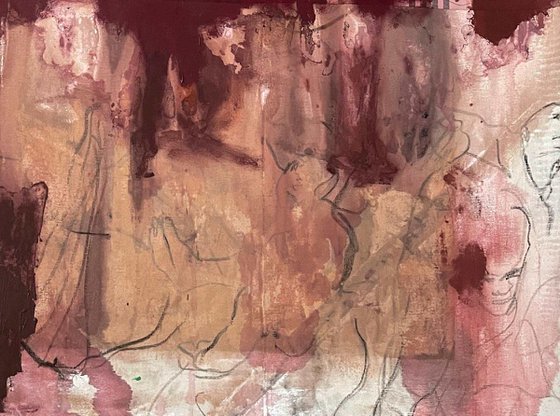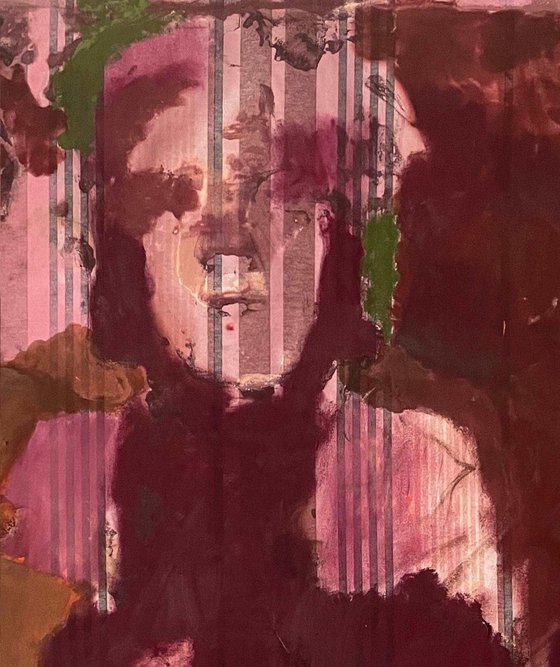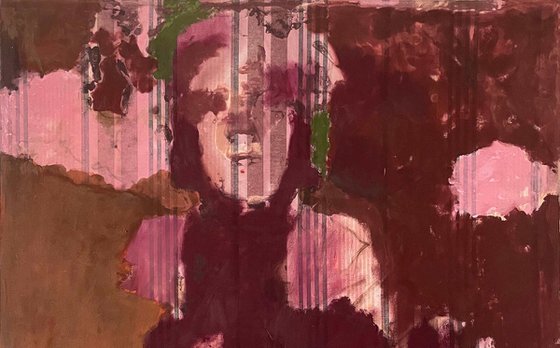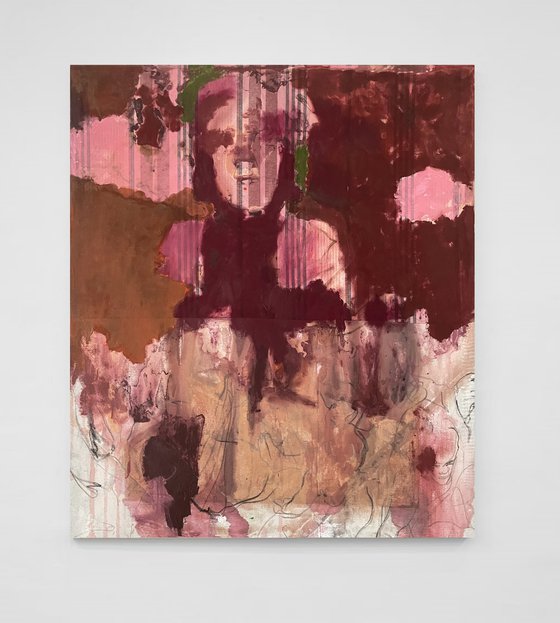Main Navigation
Original artwork description:
“Predators and Herbivores” explores the enduring imprint of violence, control, and survival in post-socialist society through the symbolic tension between dominance and vulnerability. Drawing from both architectural relics and the human form, the series renders memory as a contested site — where bodies echo historical trauma and buildings breathe silent authority.
Using layered abstraction, fading outlines, and ephemeral color washes, Gela Mikava constructs a visual language where softness and brutality coexist. The figures dissolve into fragments, while vertical structures impose, surveil, and divide — referencing the ghost of political ideologies that still shape perception and power.
The palette oscillates between restrained pastels and aggressive reds or industrial greys, invoking states of erasure, resistance, and reappearance. Through this painterly archaeology, Mikava proposes that history is not only documented in monuments but also etched into flesh, atmosphere, and emotional topographies.
These works offer a quiet yet insistent confrontation: who devours and who survives? And what remains, in the end — the predator’s monument or the herbivore’s memory?
Materials used:
Mixed media on textile and canvas
Tags:
#fine art #abstract art #conceptual art #figurative painting #modern artwork #expressionist style #human nature #bold composition #surreal figures #power dynamicsFigurative Abstraction (2024) Mixed-media painting
by Gela MIKAVA
1 Artist Reviews
£5,953.81
- Mixed-media painting on Canvas
- One of a kind artwork
- Size: 120 x 140 x 3cm (unframed)
- Signed on the front
- Style: Abstract
- Subject: Abstract and non-figurative
Loading
Original artwork description
“Predators and Herbivores” explores the enduring imprint of violence, control, and survival in post-socialist society through the symbolic tension between dominance and vulnerability. Drawing from both architectural relics and the human form, the series renders memory as a contested site — where bodies echo historical trauma and buildings breathe silent authority.
Using layered abstraction, fading outlines, and ephemeral color washes, Gela Mikava constructs a visual language where softness and brutality coexist. The figures dissolve into fragments, while vertical structures impose, surveil, and divide — referencing the ghost of political ideologies that still shape perception and power.
The palette oscillates between restrained pastels and aggressive reds or industrial greys, invoking states of erasure, resistance, and reappearance. Through this painterly archaeology, Mikava proposes that history is not only documented in monuments but also etched into flesh, atmosphere, and emotional topographies.
These works offer a quiet yet insistent confrontation: who devours and who survives? And what remains, in the end — the predator’s monument or the herbivore’s memory?
Materials used:
Mixed media on textile and canvas
Tags:
#fine art #abstract art #conceptual art #figurative painting #modern artwork #expressionist style #human nature #bold composition #surreal figures #power dynamics14 day money back guaranteeLearn more
